November 2022, San Francisco and Oakland, CA. ZERO1: The Art & Technology Network (ZERO1) and Leonardo, the International Society for Arts, Sciences, and Technology (Leonardo/ISAST) are thrilled to announce that we have entered into a strategic partnership to amplify the impact of our respective organizations and integrate our extensive global networks.
The rationale for this partnership is evident in our closely aligned missions and visions; our shared history and legacy at the junction of art, science and technology. The resonance of our mutual commitments across creative sectors extends into our programs and the communities they reach. Leonardo has developed a robust international network spanning 135 countries through the readership of our flagship journal and book series, as well as the proliferation of Leonardo Art Science Evening Rendezvous (LASER) speaker series, now hosted in over 50 cities around the globe. ZERO1 has nurtured an international network through community-building during the ZERO1 Biennial that ran through 2012 followed by expanded engagement in 31 countries through cultural exchange facilitated as part of its American Arts Incubator and Creative Impact Labs. Both organizations have furthered transdisciplinary thought and practice through residencies, fellowships, labs, public art, summits, and symposia that contribute to the vibrant creative community we are thrilled to now bring together.
This burgeoning partnership will bring our two non-profit organizations into deep operational and programmatic collaboration, taking advantage of synergies and complementary program activities to become more efficient and effective in our work. Towards these ends, Leonardo has invited ZERO1 Founder, Andy Cunningham, to join its Board of Directors, and ZERO1 Executive Director, Shamsher Virk, will assume the role of senior director for programs & operations at Leonardo. Diana Ayton-Shenker, Leonardo CEO says, “We are thrilled to welcome Andy Cunningham to our Board, and Shamsher Virk to our team. Integrating ZERO1 leadership and talent into Leonardo enriches our work, capacity, and potential for positive impact.” ZERO1 Executive Director, Shamsher Virk, adds that “this partnership is an example of ZERO1’s commitment to collaboration with peers in the field and underscores our dedication to expanding the collective global network of creative minds.” Details of the operational partnership will be fleshed out over the coming months; the organizations have already begun working closely together to integrate programs, leadership and network. We look forward to a fruitful collaboration and deep partnership.
On the final day of our lab experience in Jordan, participants, C-Hub + IDare staff, and I tromped up cascading waterfalls in Wadi Mujib. It was our final experience together - a capstone in embodied research, and most memorably, a really fun field trip. Wadi Mujib is a canyon with a river flowing through it that empties out into the Dead Sea. The water is sacred, and the site has been developed into a well-run tourist operation, yet one still feels wild exploring the twists and turns of the canyon and the crystal blue-green water that flows down over red rocks.
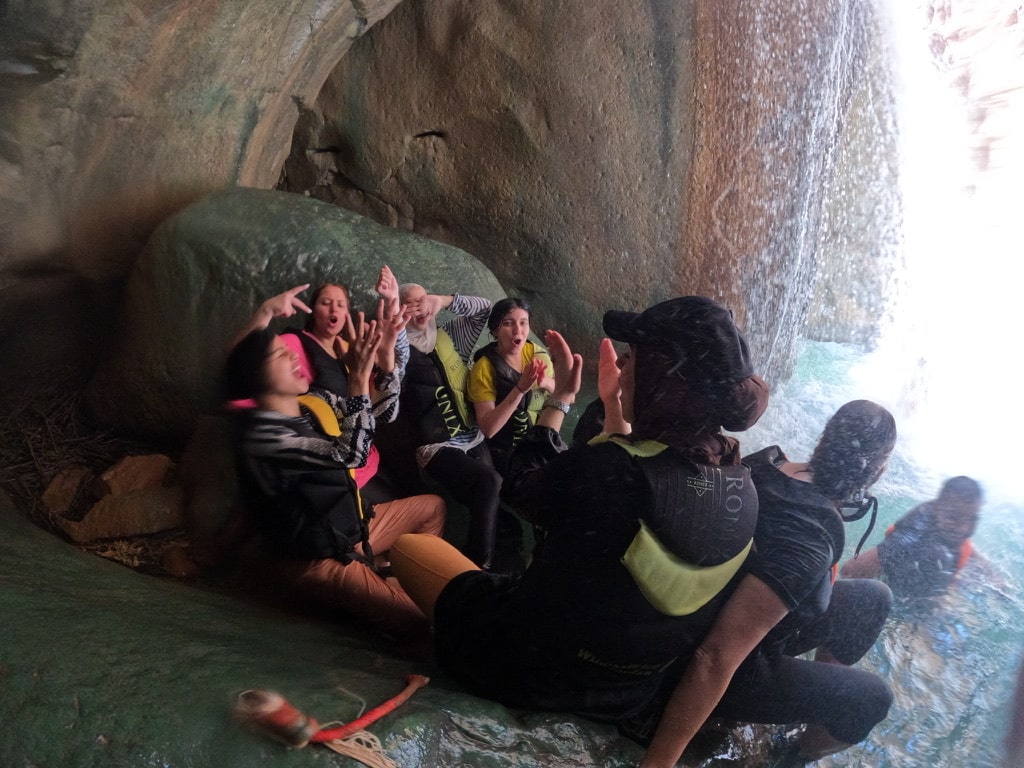
For many of the participants on our trip, it was the first time they had experienced this sort of outdoor adventure. It was my first time at Wadi Mujib as well, making it novel for us all. There are moments during the kilometers-long ascent up to the waterfall that are peaceful; you can float, belly up, gazing at the towering red rocks above you, reflections of the water shimmering like a mirage.
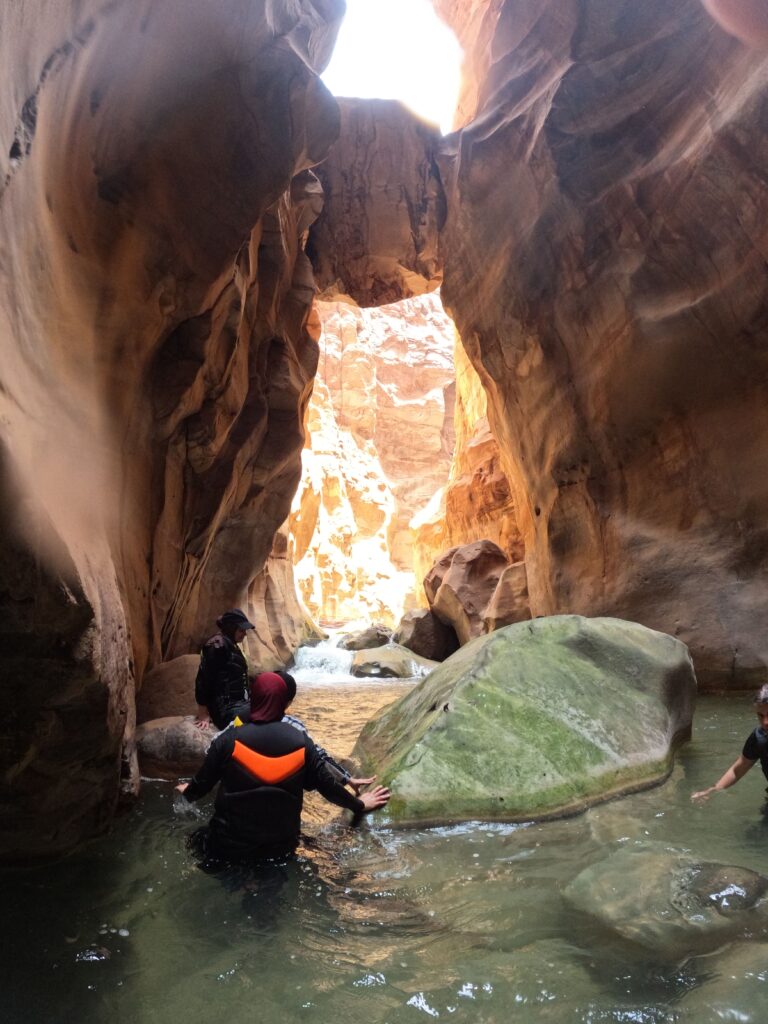
There are also moments that are treacherous; fighting your way up the crashing weight of a waterfall over slippery rocks when a strange hand appears from above, pulling you over the ledge. You climb up, exasperated. In the end, all thirteen of us made it all the way up to the waterfall and back down. It was wild, but invigorating.
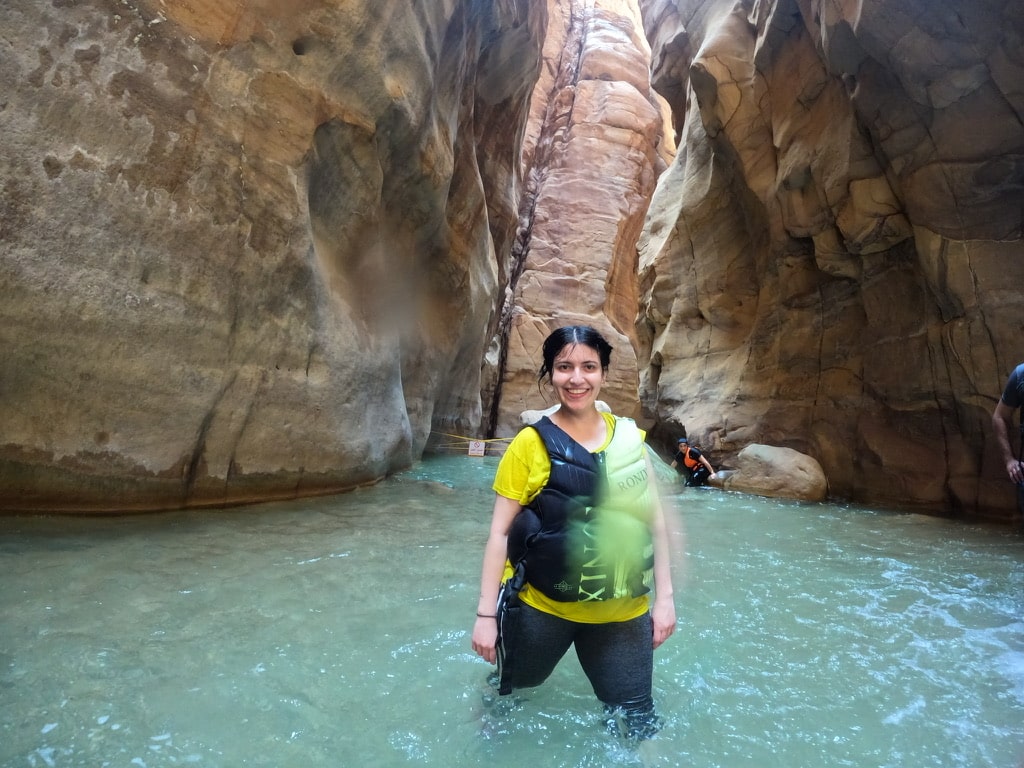
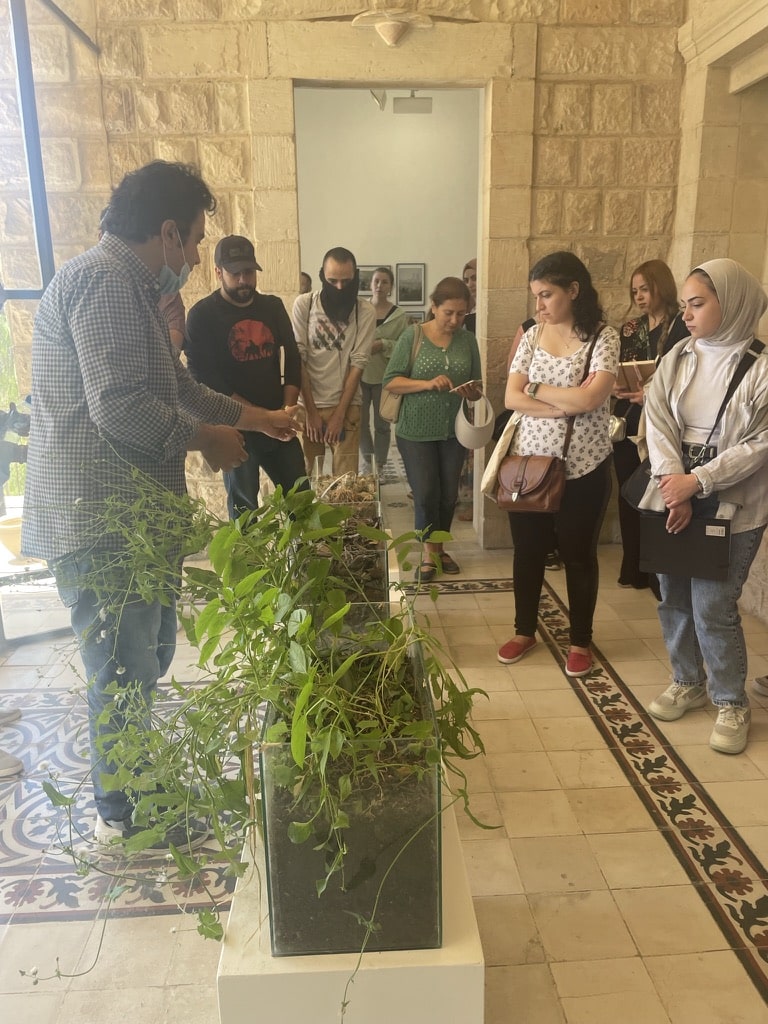
This might be a great way to describe the entire experience of Creative Impact Lab Amman: wild yet invigorating. Our workshop was full of research: we visited Darat al Funun, a contemporary art center in Amman, to see the exhibition Re-rooting. This exhibition was certainly wild, with live plant works, installations including jars of water, and tumbling orange crates.
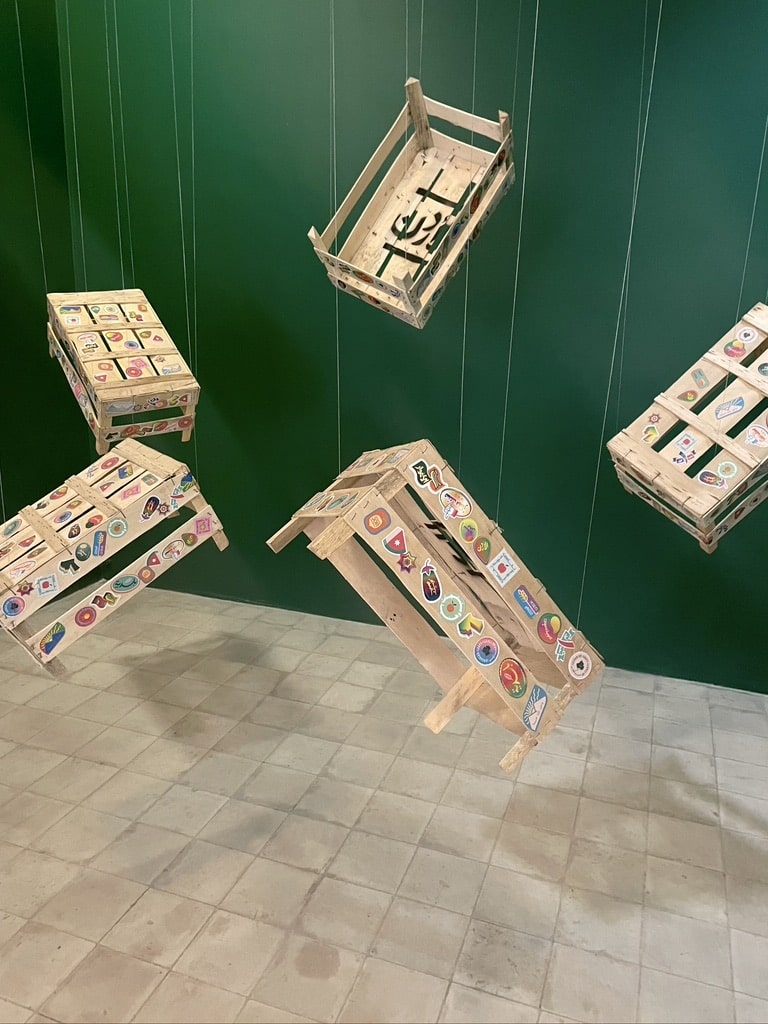
The exhibition was poignant and central to our research on water sustainability in Jordan. In Re-rooting “the constellation of works presented attempts to untangle the complex histories that make up the current crisis of economy and ecology, not only in an effort to denunciate them but also to showcase hacks, diversions, and solutions. They look at forms of self-determination and autonomy performed by local communities as a rejection of normalized exploitative and colonial models.” This exhibition became central in our thinking around the issues present in the region that relate to water sustainability: it is all rooted in the land, in autonomy over the land, and agency in one’s own future.
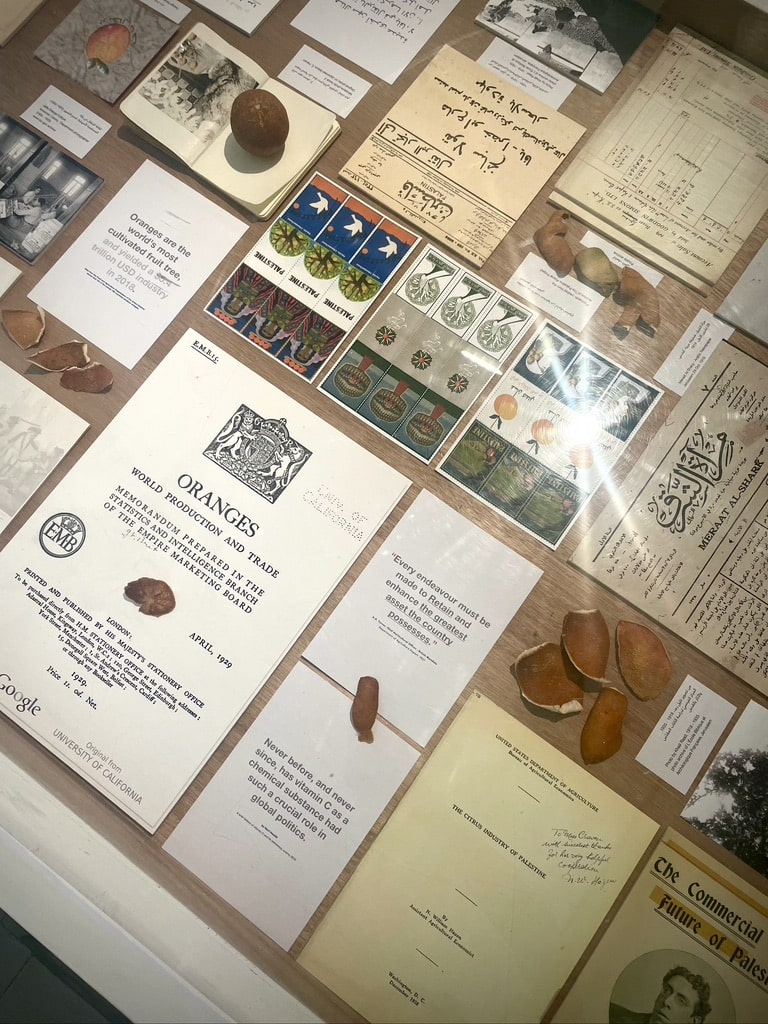
Our learnings from an activity with CEWAS Middle East were equally as inspiring for participant projects. Aline Bussman led us through a workshop on the water system in Jordan. We were able to understand the complex web of inputs and outputs, and the lens of cultural + social perspectives of water, that make sustainability so challenging. It is not neat, it is not straightforward. The aquifers that supply Jordan with water are being emptied, and unlike surface water, aquifers cannot be refilled. Leaky transportation pipes and public perceptions against recycled water all present challenges to creating more sustainable processes for water consumption in the area.
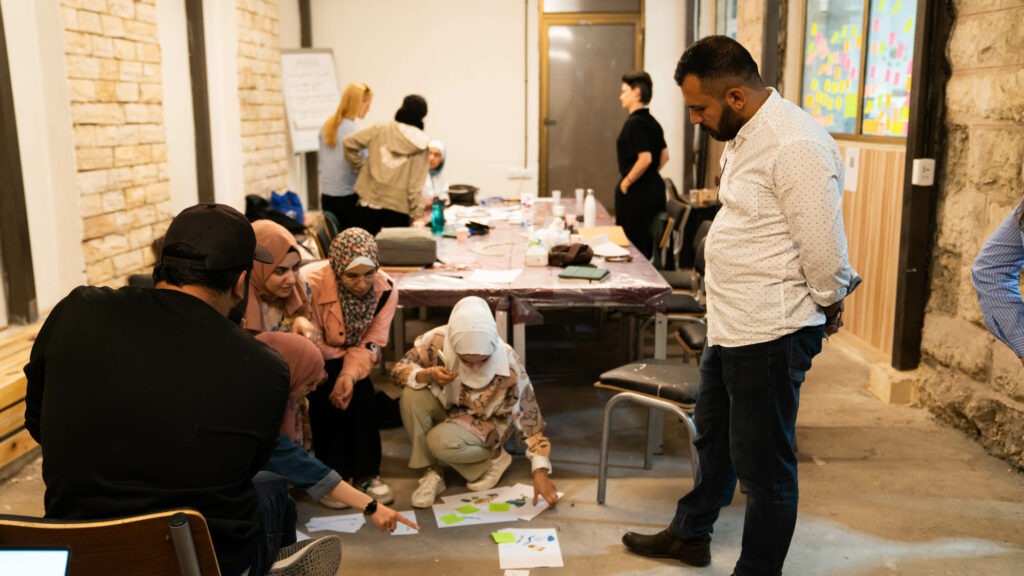
Through their projects, participants turned their inspirations into projection mapping + sculptural artworks using video, sound, and sculpture. The projects reflected metaphorically on our condition in relation to water: Nasser + Abdullah’s project ‘Love Drops’ likening the human race to a fish out of water, flopping in panic. They also ruminated on our intrinsic linkages: Seem and Sanya’s Fishbowl, and Salam and Maha’s Sea Waves Speak reflect on the ways in which humans and fish are tied in our wellbeing. Afnan’s SoS considers the relationships between the human body and health, and the environmental body and health. Some even took more direct inspiration from Re-Rooting: Hiba’s project The Orange Tree comments personally on the Palestinian struggle to reclaim the Jaffa tree production, using the symbolic orange and home-grown orange plants as a moment of personal activism.
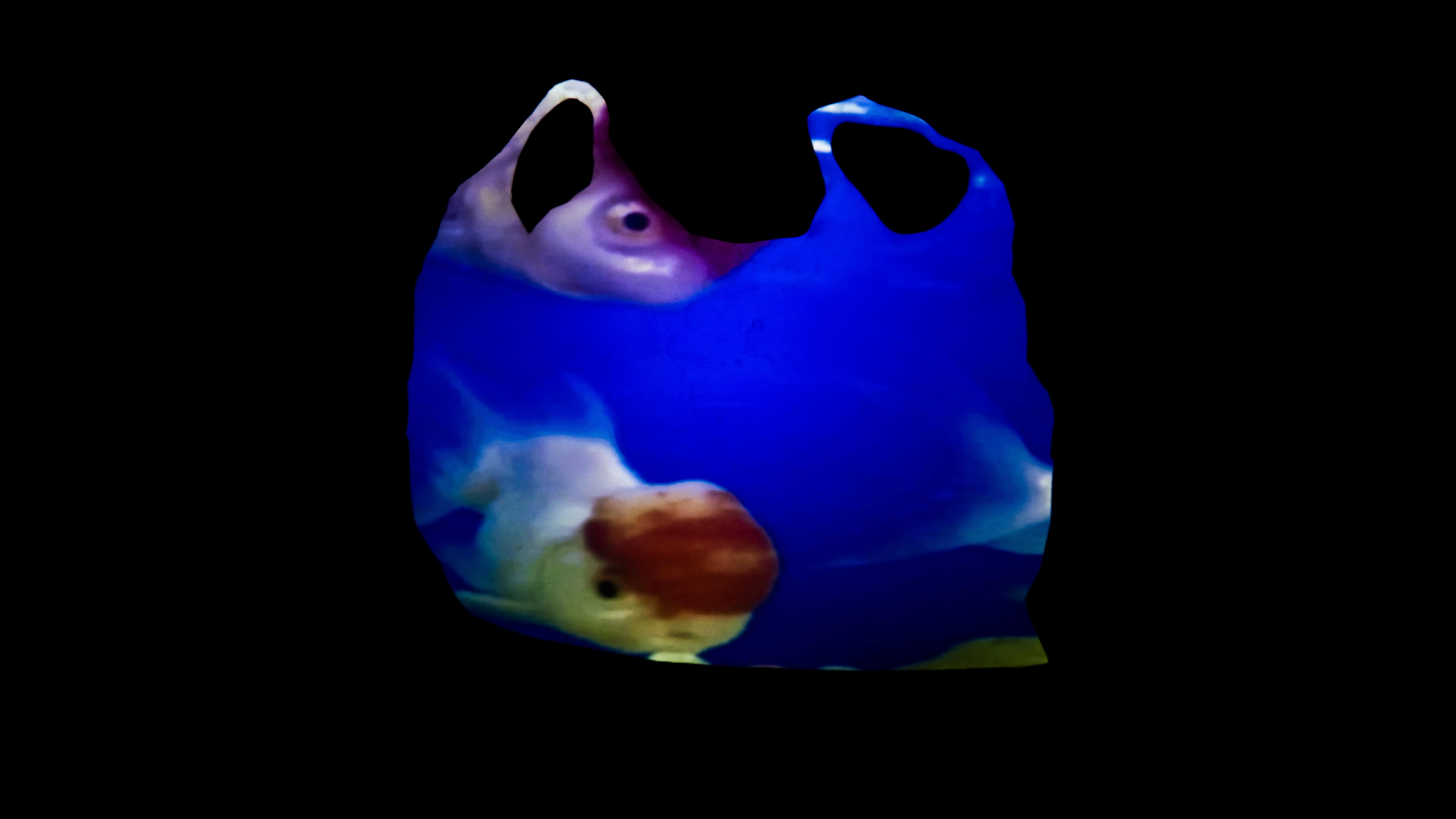
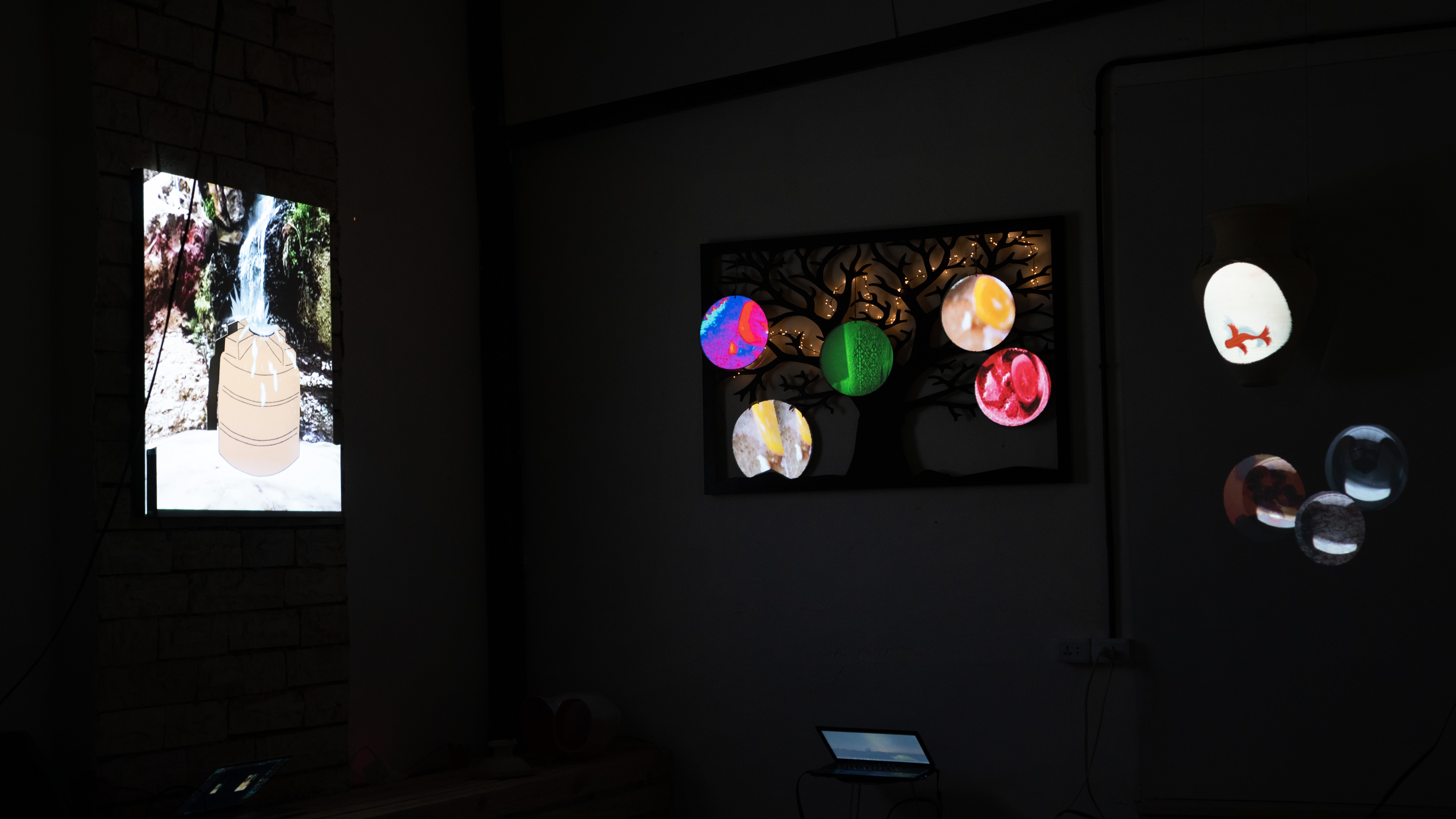
Maryam and Raghad’s project Valley of Color reflects on pollution and the impact it has on the integrity of revered water sources like Wadi Mujib. Nawal’s animation visualizes the errors in water transportation and leaky infrastructure.
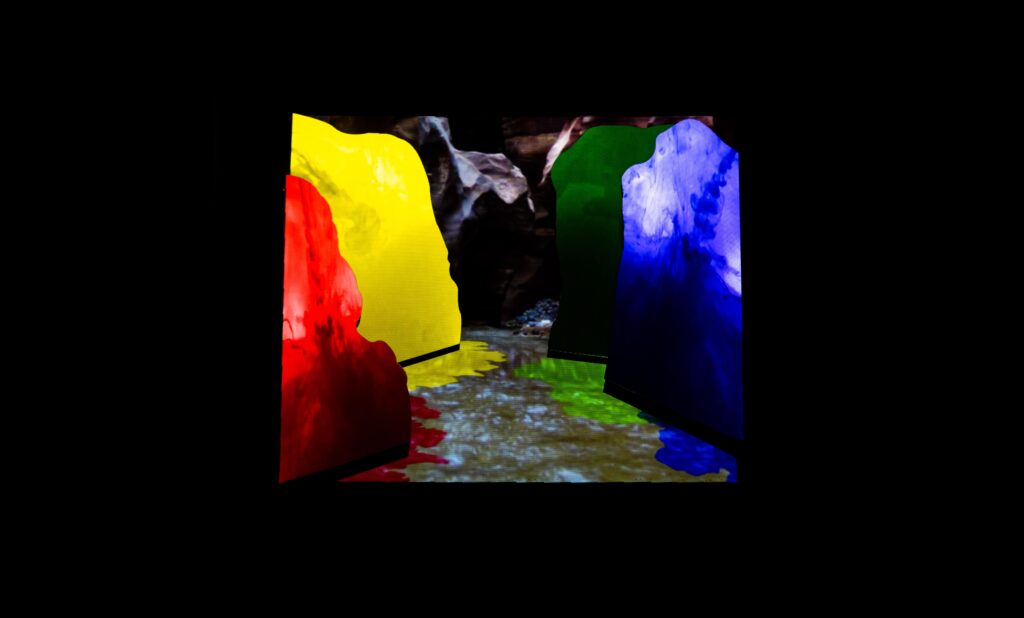
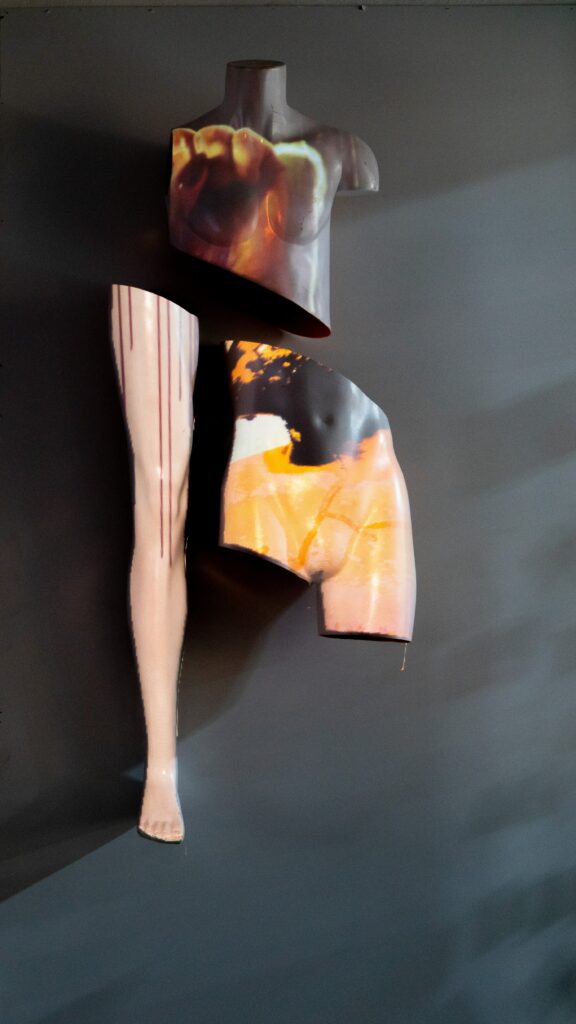
The constellation of works is moving. It is forward thinking, yet also reflective on regional traditions and the unique history of the many people who call Jordan home. Creating these works, like our ascent up the Wadi Mujib, was wild. We encountered many technical challenges, and learned quite a few skills in a short period of time. At times, the language barrier was frustrating, but we found ways to communicate when translation was challenging.
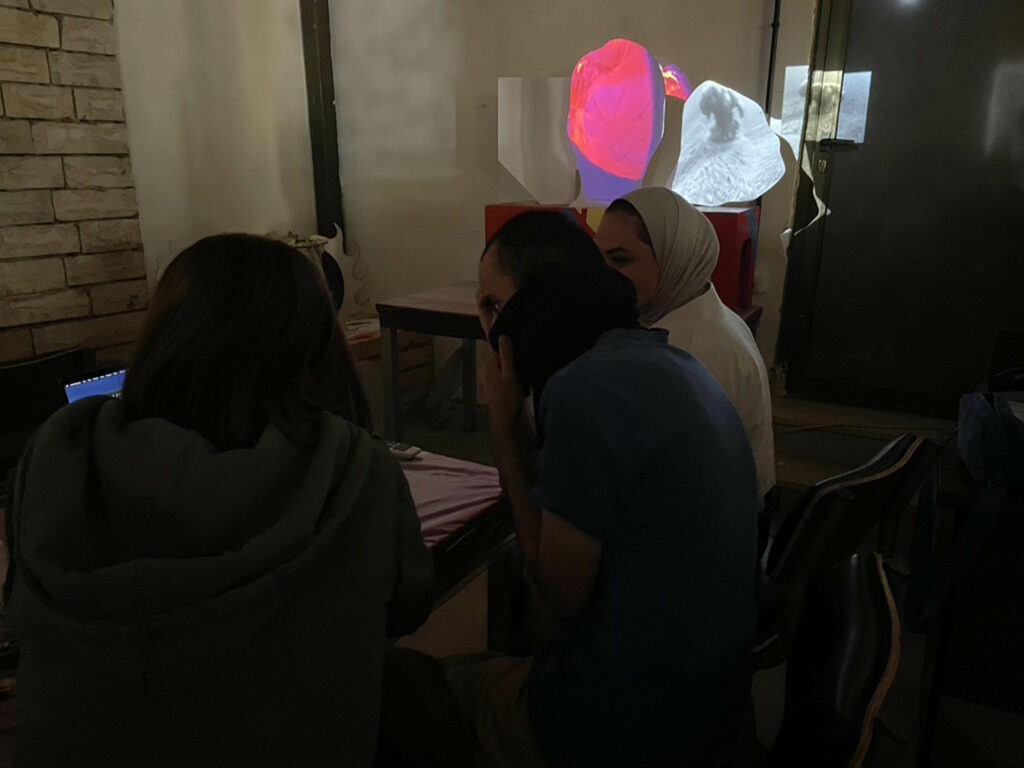
Participants learned from each other, assisting one another with projection mapping, ideas for fabrication of their final projects, and hanging the exhibition. This sort of exchange makes learning together rich; when students become teachers, and the typical hierarchy of knowledge production shifts. We all learned from one another, through skill sharing, story telling, and creative production. We all helped each other climb up and over the waterfall.
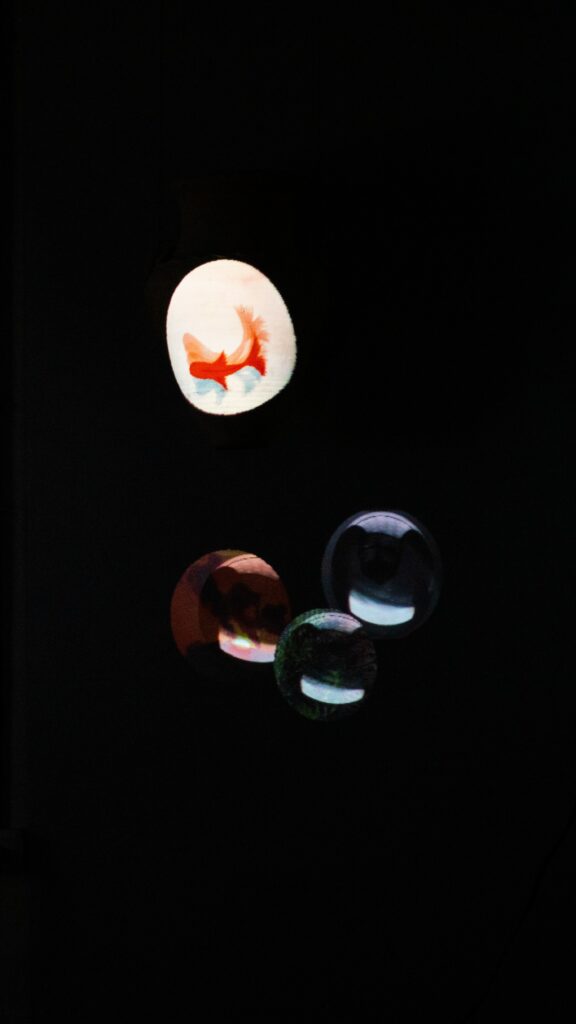
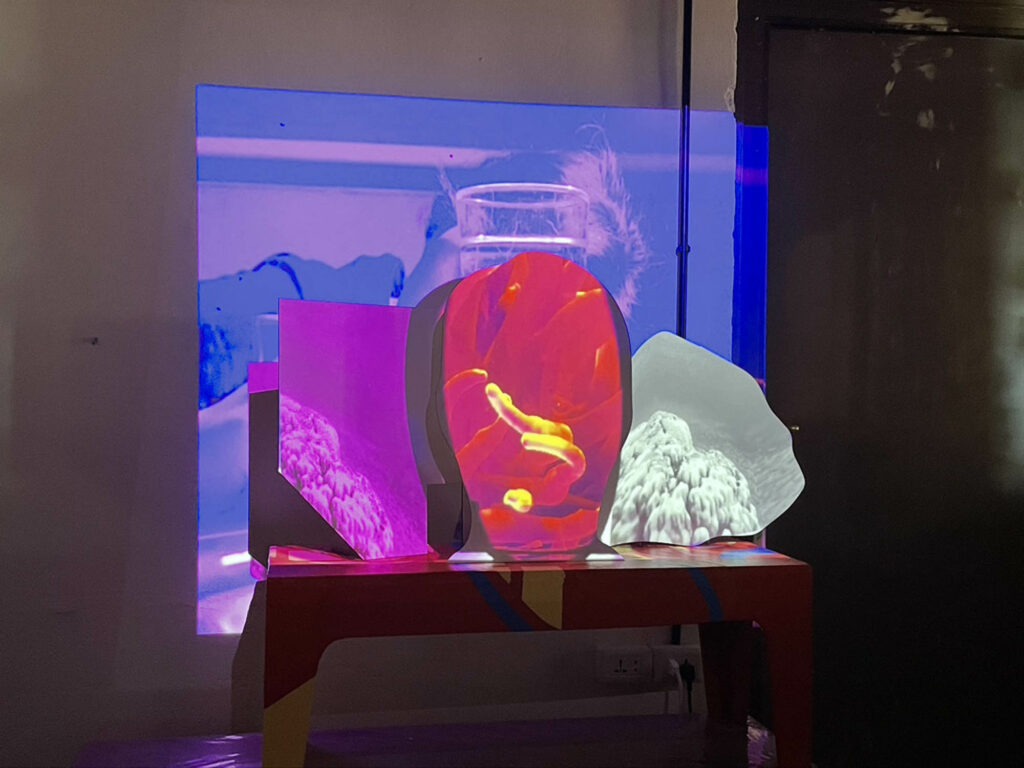
The spirit of our cohort and team at IDare and C-Hub allowed us to push forward through this wild process of collaborative creative production, and in the end create something invigorating. The projects were all exhibited together for the public and virtual guests. What is hidden behind them, is the strong bonds we all formed in moving through process: in learning together, in having new experiences together, in our meals and Google Translate conversations, and quiet moments looking at art.
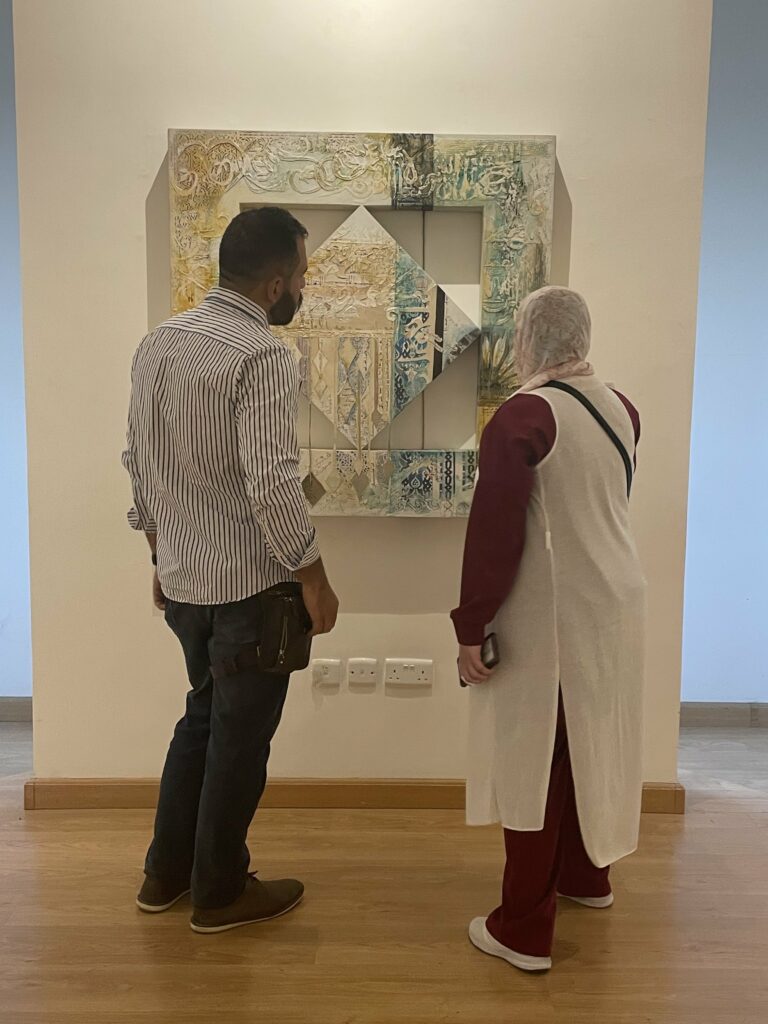
The participants presented their projects during an in-person final event at the C-Hub in Amman, Jordan. Shamsher Virk (ZERO1), SaraNoa Mark (guest artist + critic) and I joined in remotely. It was disheartening to experience the projects only virtually, but even at a distance, the pride both participants and our team at C-Hub took in the presentation of these ambitious works was palpable. The works are installed in a classroom modified to become a temporary gallery at the C-Hub, and project presentations took place in the makerspace adjacent to the artworks.
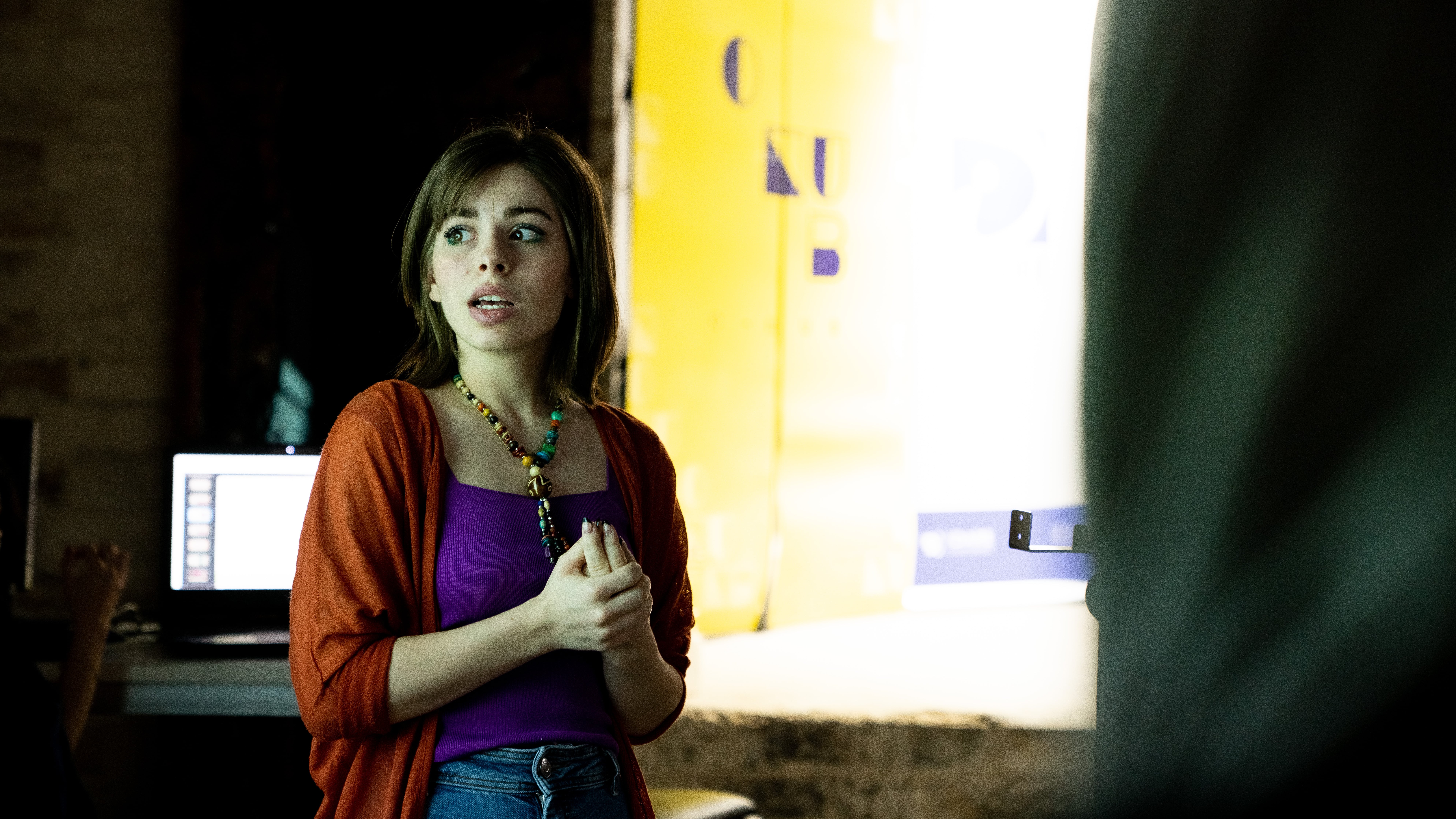
Participants shared the concepts, materials, and process of their pieces, as well as future plans for expanding upon these ideas or their creative practice.
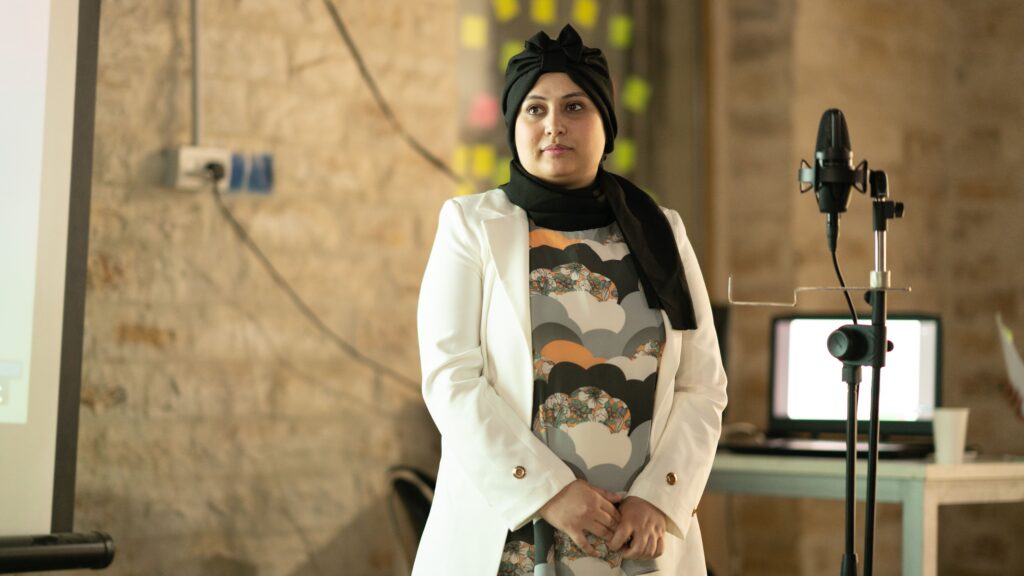
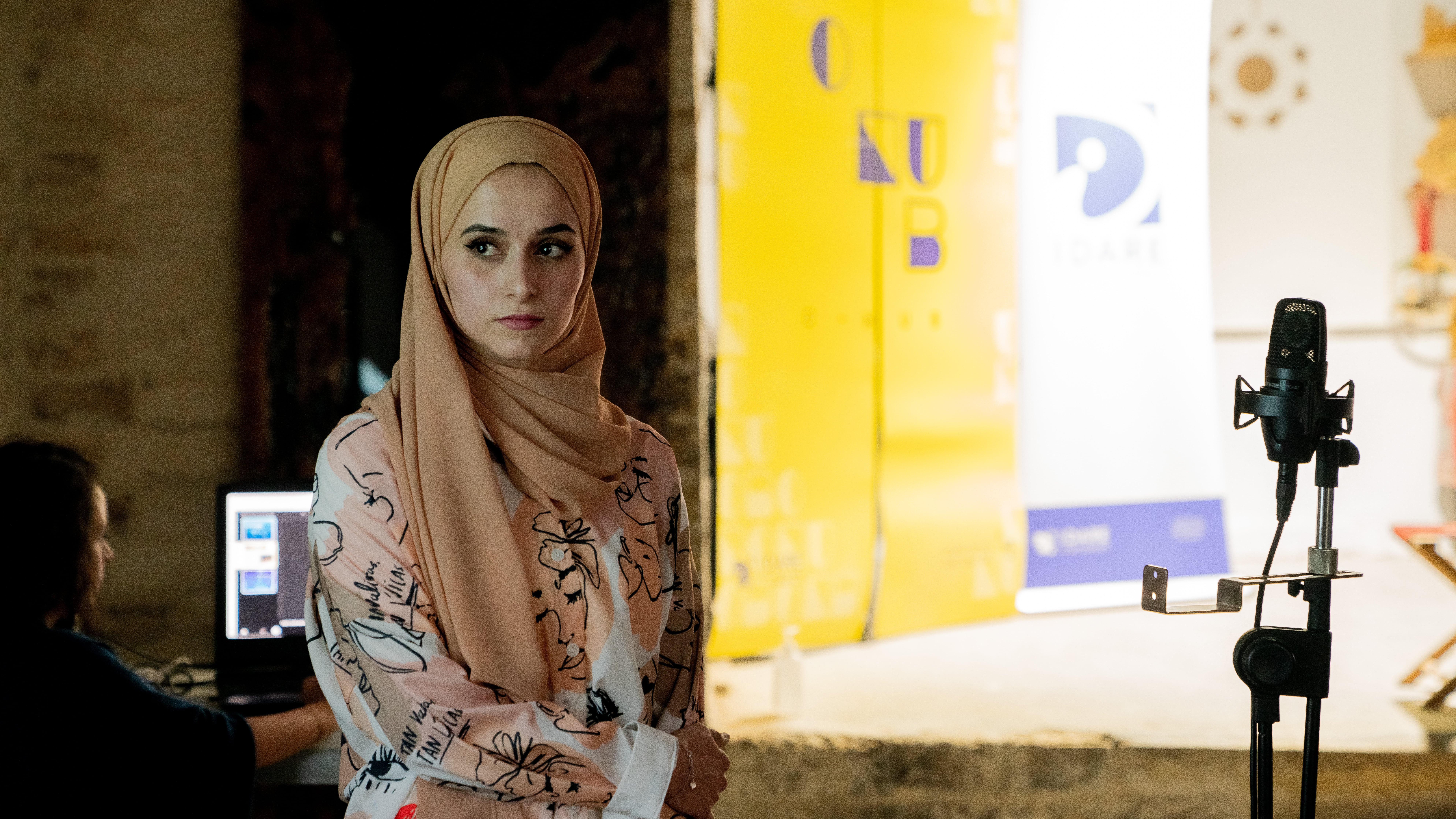
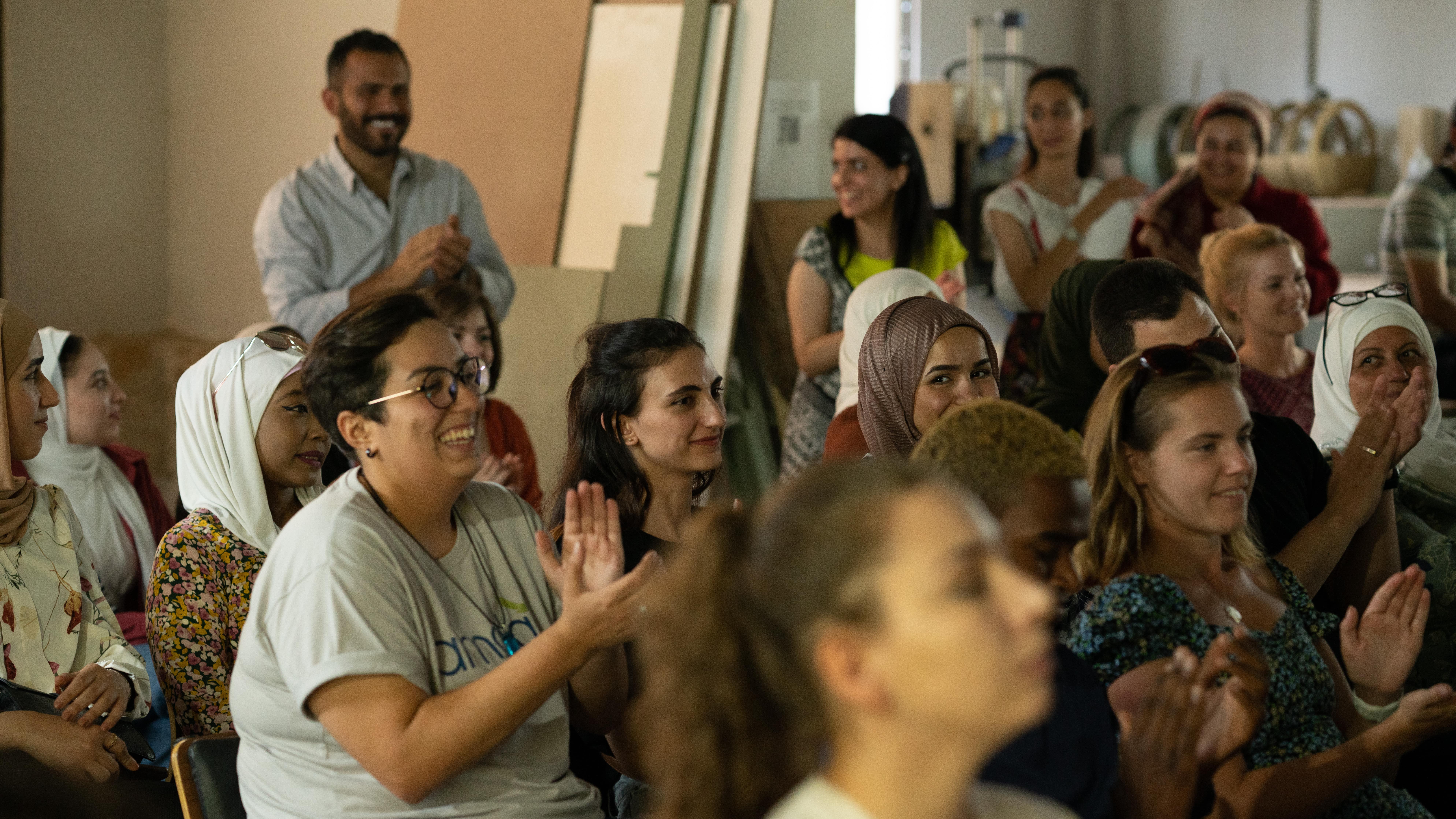
Guests to the C-Hub were able to share in this final and critical step of the artist's journey: public presentation. It is clear that the ideas and experiences we had together will live on, and many participants have been planning ways to continue and expand upon their projects. Hiba hopes to host her work in conjunction with a local symphony, Seem and Sanya hope to apply to an art exhibition with the piece. Raghad hopes to make a new work considering concepts around water sustainability. It is my personal hope that the collaborative relationships borne of this exchange will also live on, and that this was the beginning of something wild and invigorating, rather than a predictable end. The spirit of this exchange is what we can hope for in the face of global climate resilience: determination, follow-through, and invigorating collaboration.
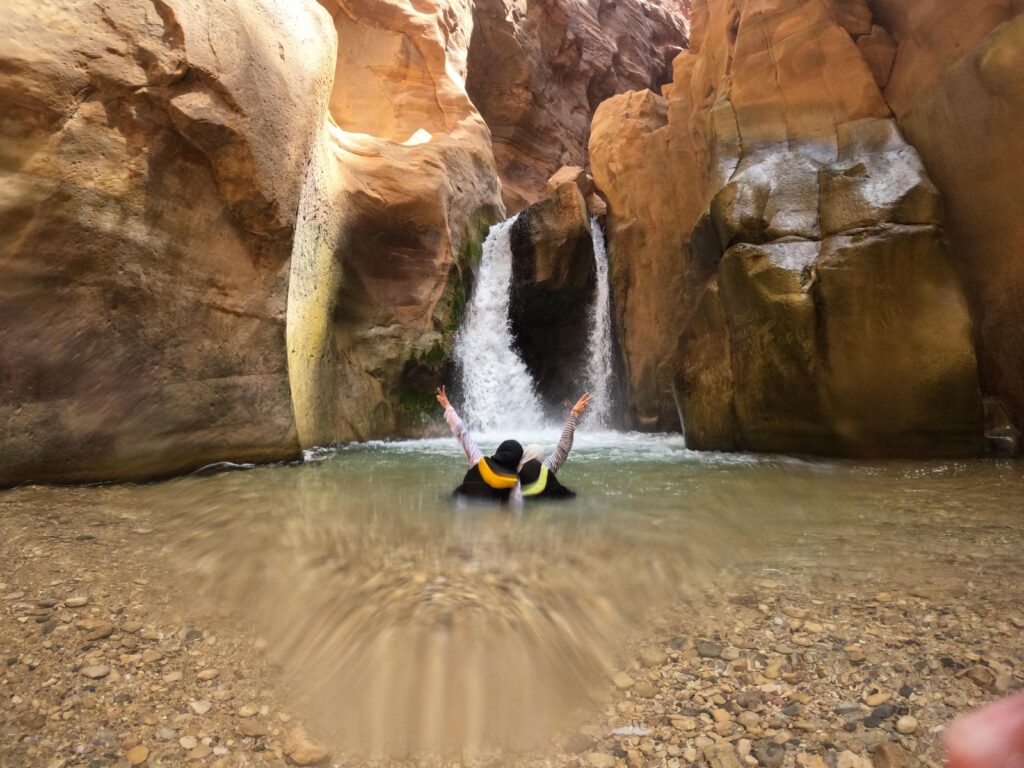
Feature image credit: Fishbowl, Sanya Qumuq and Seem Alsayeh. Photograph by Mohammad Saradeeh.
From researching underwater adventures in the Red Sea, to learning about the historic sites in the Wadi Rum, the research and preparation phase of the Creative Impact Lab Amman has been exciting and enlightening. The topic for the Lab is sustainability, and given my own recent work on ocean health, I feel compelled to explore water as a cultural and ecological resource in Jordan. Like parts of California (where I currently live), Jordan is stressed for water, while facing additional challenges from the climate crisis and population growth. Aquifers that supply Jordanians with clean water are running dry, impacting both the daily available water for urban dwellers, and the ability for agriculturalists in rural areas to maintain sustainable livelihoods.
I want to raise this as a topic of discussion with the workshop participants and learn about their own relationships to water. How do they feel about the climate crisis in Jordan? In what ways does water show up in their lives — in cultural and historic art and references, in pop culture, in their daily conversations with friends and family? How do they envision the future of water? We will explore these questions through a two-week intensive hosted by IDare for Sustainable Development in the capital city, Amman.

Water is both a collective and highly personal resource, so I want our multimedia project to explore methods of collective resilience and collaboration. In my past work facilitating collaborative groups with Mountain Time Arts in Bozeman, Montana, and in my home city of Los Angeles, I have found that the challenges of collaboration bring huge rewards. I hope that as a team we can all learn to work together and generate new ideas and dialogues through the process of co-creating — a skill set that is essential for climate adaptation.
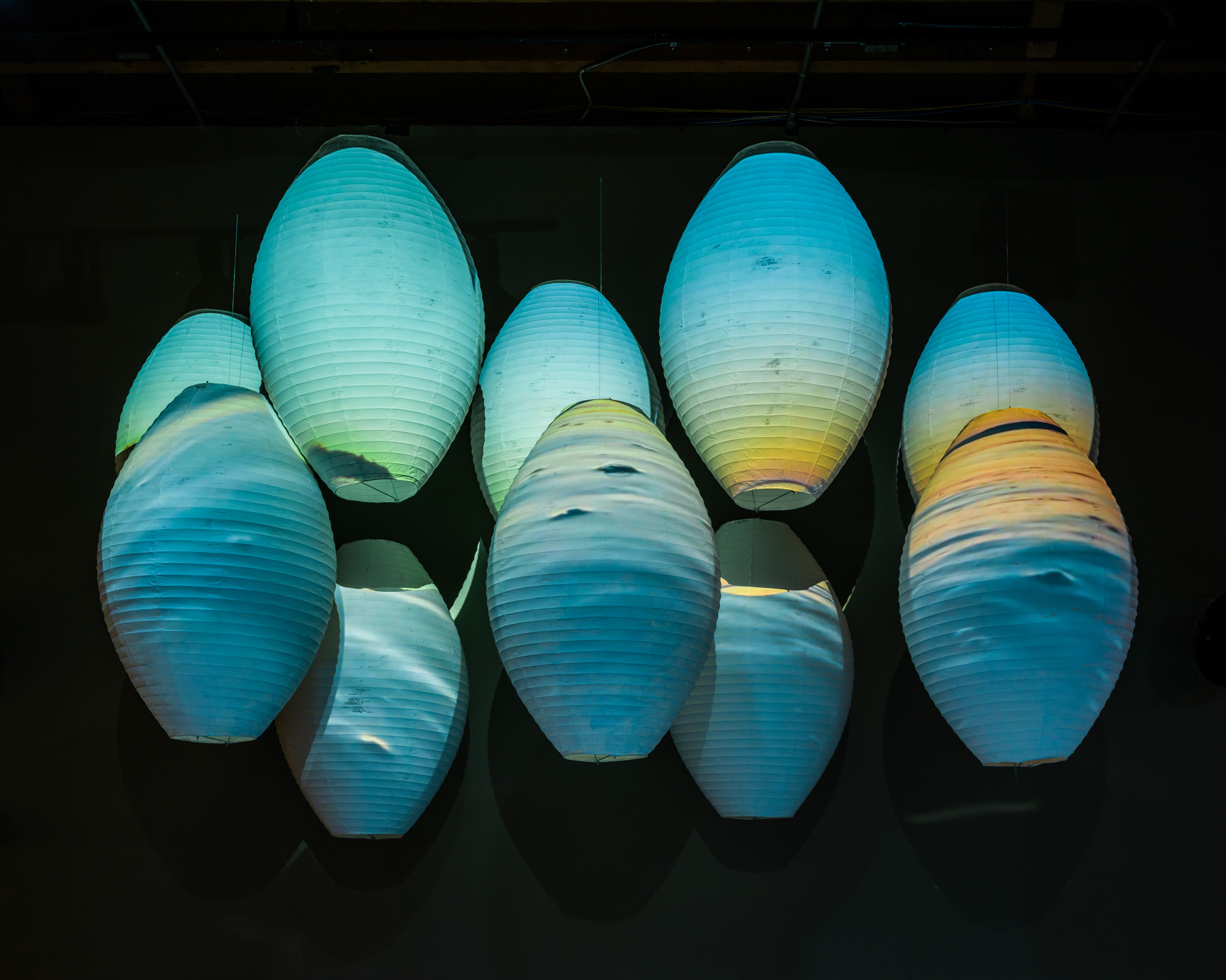
In reviewing the applications for the Lab, I am excited to see how many participants are passionate about sustainability and water issues in Jordan, while also being excited to incorporate art and technology for creating responses to ecological issues. Our team will include architects, designers, teachers, artists, water experts and more. My hope is that we will all learn from one another, and our collective installation will emerge from the structures of collaboration.
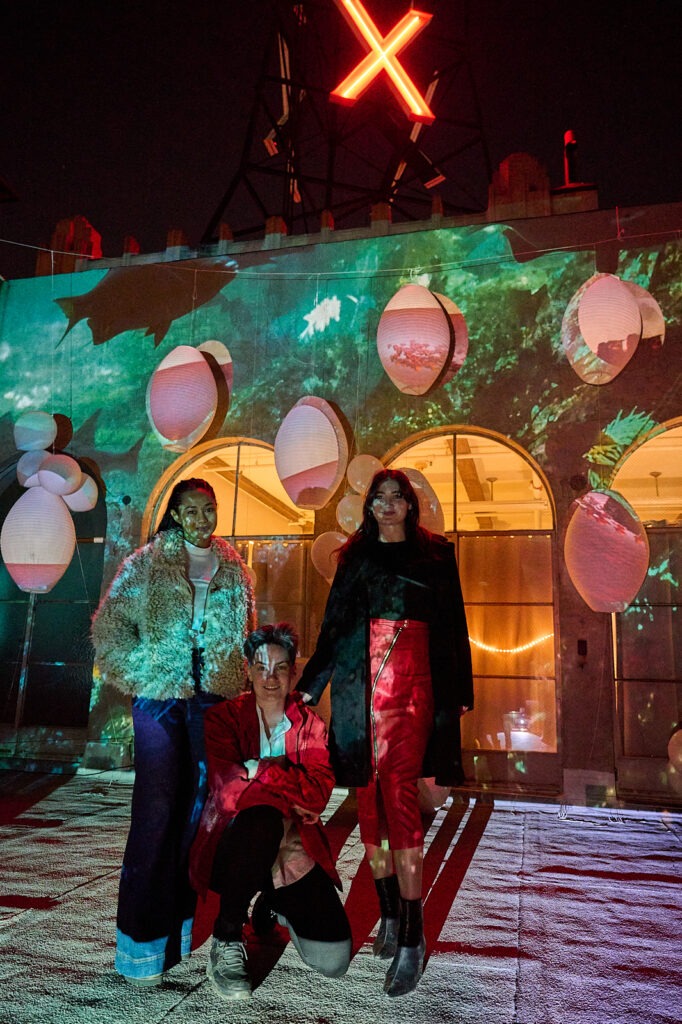
For our collaborative project, we will develop a multimedia installation using sculpture, video, sound, and projection mapping. We will weave influences into the work that are pulled from local art galleries and museums, as well as the participants' own cultural inspirations, research and knowledge. This exchange of ideas, skills, time, meals, and creative production becomes a meaningful part of the process of making. While some of the details regarding the final form of the multimedia installation are to be determined, I am excited to continue creating a structure for our collaboration.
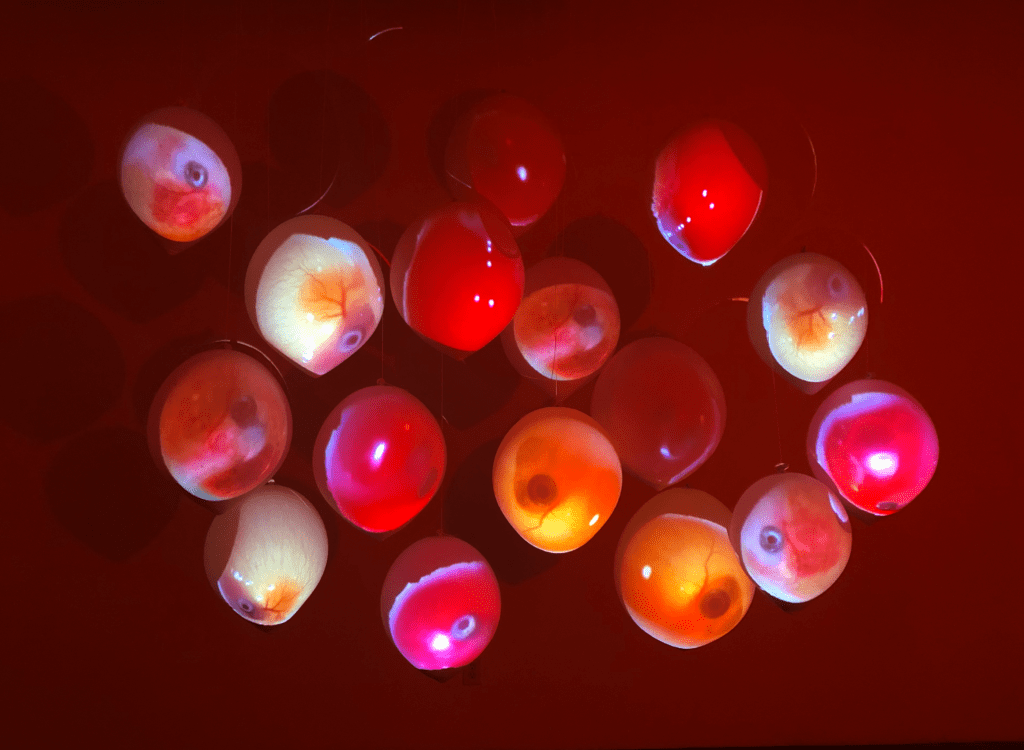
Feature image credit: The Aquarium at Heidi Duckler Dance, 2022. Photo by Rush Varela.
There are no words to describe how grateful and fulfilled I feel after these five weeks of exchange, working together with the San Francisco Bay artists — Stephanie, Jenny, Sharmi, Erik, Marlys, Avital, and Parul. It has been a great pleasure to meet and work with them despite the approximate 6000 miles of physical distance between Vienna and the Bay Area; I have the odd and delightful feeling that I've actually met them in person.
Within the framework of international exchange, I had the pleasure of designing and leading online sessions with the mission of exploring and addressing the social challenge, "In “Search of Truth.” Using feminist hacking strategies as a top-down methodological ground, informed by Post Humanism and New Materialism theories and practices, we rose to the challenge of collaborating, discussing, brainstorming, analysing, creating, imagining, speculating, dreaming, and inventing alternative interfaces to unravel and demystify our perceptions of truth.
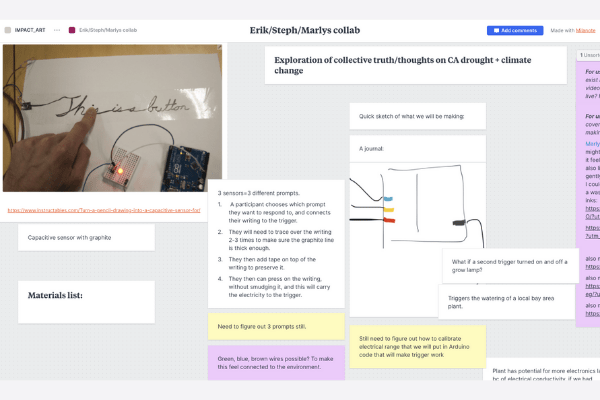
In the first three weeks we had six intensive group sessions, each focusing on a particular problem and perspective regarding the main topic, "In Search of Truth.” In session 0, we reviewed codes of conduct and focused on methods and strategies in tackling the theme — we discussed hacking as well as critical and diffractive thinking as possible ways to unravel our perceptions of truth.
In Session 1, we attempted at “Touching the Truth” by asking ourselves, “What to believe?” and “What do I wish to be true?” We accomplished this mission by examining and questioning models of machines that were designed with the purpose of leading users to a certain belief and understanding of truth. Starting with the idea that any search for truth is prompted by a desire for change, we searched for open source tools that might be useful in empowering our wishes. This challenge was our launching pad into practice mode, which was followed by a couple hours of hands-on work to physically build a “touch” sensor made of recycled material.
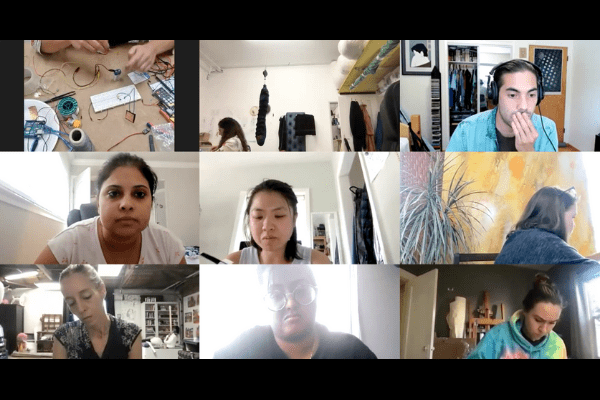
Session 2 was devoted to the idea of “Demystifying What is True,” with a particular gaze at the truth behind new technologies. Using a more phenomenological approach, we bounced between individual and common situations, from human to non-human perspectives, and back to one of the matters that might establish common ground: water. Hovering on feminist hacking ground, we discussed the importance of caring in re-thinking and repairing the world. The discussion led us to make a DIY electronic circuit that, with the help of an Arduino microcontroller, enabled us to listen to the electricity in each other's bodies.
Session 3, with the title “Touch/Pinch to Believe,” led us to the core of perception and its relevance to the individual and/or collective conception of truth. By looking into the complexities of the proprioception system, we recognised the importance of touch and haptic stimuli in differentiating reality from virtuality. With the use of microcontrollers and vibration motors, we attempted to touch each other, if only virtually.
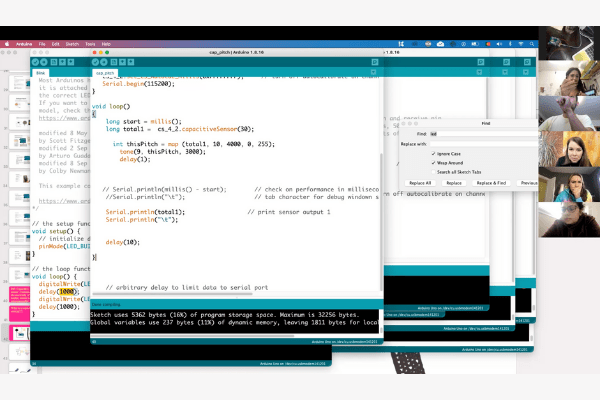
In Session 4, we speculated on truth, thinking outside the box, brainstorming on apparatuses for the future, and ways of expanding interfaces that might be helpful in hacking our perceptions of truth.
In session 5, participants presented their project ideas and feedback to each other. I want to highlight the solidarity and mutual help between the participating artists. At the end of the session, we made sure that everybody was in contact and organised a mutual help-and-assistance network. It was extraordinary for me to observe that even despite the physical distance, participants were able to reach out and empower each other. At this point, by observing the common and safer space we established together, I started to shift my attention from focusing on the final result to the collective effort, mutual support, and work-in-process mentality employed by the participants. What a joyful and rewarding moment!
Not even two weeks had passed and participants were already “ready” to document and present their projects. Together with the amazing web-designer Maya Hilbert, we set the stage to showcase participant projects — the virtual exhibition. Maya Holm and Shamsher Virk joined our working forces and organised the documentation of the projects as well as the text review. Again, another very good example of a successful collective effort. A super-mega-thanks for everybody's support!!!
The live showcase event took place on October 9th and was marked by the presence of panelists Dasha Ortenberg, Rashin Fahandej, and Vanessa Chang, who kindly offered feedback to the exchange artists. Their contribution was central and crucial: along with very positive feedback, they tackled some sensitive points that were not perceived before and brought new perspectives that had not yet been considered. We were all very grateful and honoured by their participation in the event.
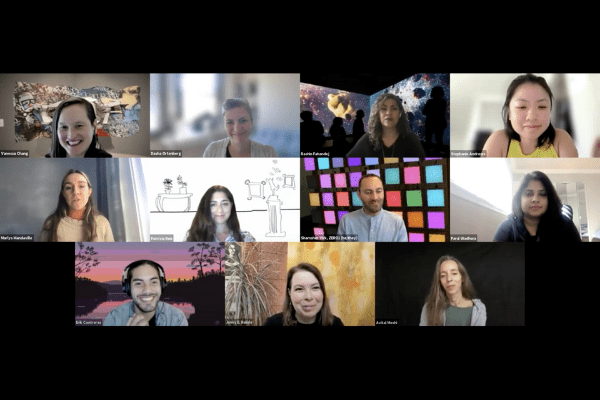
The new media art works-in-progress displayed in the exhibition "In Search for Truth" are statements and essays on how truth is perceived differently within multiple distinct contexts and points of view. A common theme is the wish to unravel the truth by enveloping otherness — whether that is through the self-other or collective-other — which is an aspect that emerged from the deep solidarity within the group. The exhibition expresses a collective concern towards an excessive trust, dependency, and reliance on new technologies in the digital age, either by tackling some of its troubles — such as the digital self, artificial intelligence and mobile tracking — or by speculating on "true" presents and futures. Either way, we confirmed the impossibility of a one-and-only reality, and with that, the urgent need to constantly re-situate ourselves and become aware of the other side of “truth.”
I feel very honoured for the opportunity to work with these talented artists and for being able to follow their process until this stage. Many thanks and congratulations to Stephanie, Jenny, Sharmi, Erik, Marlys, Avital, and Parul!
I would also like to thank Maya Holm and Shamsher Virk for their amazing guidance and support during this journey. I sincerely wish that we keep on searching for the truth together, perhaps in other exciting future projects.
How can a “true conception of reality” be established contemporaneously, and how does it influence us as individuals and as a collective? Is our truth an individual perception or a common belief constructed by the masses? How does truth affect where we are and the way we care for each other (as humans and non-humans)? Is unraveling the truth a way to trigger social change? What makes us wish for change and what are we able to change on our own? Which personal tools or senses do we resort to in order to distinguish truth from falsity? Will the pursuit of truth emancipate us? Ultimately, can technology be an asset in the pursuit and repair of truth, even if used within fictional scenarios?
These are just some of the questions I look forward to discussing and elaborating on with some amazing Bay Area participants during the upcoming four-week online exchange. The workshops will surely challenge us to collaboratively dialogue, brainstorm, analyse, create, invent, imagine, dream, and speculate on alternative interfaces as tool kits to unravel and demystify complex systems (such as the perception of truth). These questions will also help to position us critically towards what has changed, what is changing, and what can be changed in that regard.
Since 2006, I have been teaching and offering hands-on workshops on media art, inspired particularly by the idea of demystifying and "demythifying" the apparatus. My practice is grounded in hacking philosophy and along with many other post-internet artists, I have a lot of fun with subverting the system, reverse engineering, hacking creative processes, defending access, and openismus. One of my main topics of interest is interactive haptic visuality. In my artistic practice, I seek to subvert visuality as a primary mode of experience, playing with technology as a means to expand and stimulate corporeal perceptions.
I also feel very privileged to be part of a feminist hacking community based in Vienna, Austria — Mz* Baltazar’s Laboratory. With the folks in this Hackerspace, I have learned to break with feminine gender scripts, transgress gender norms, and embrace technological challenges through feminist lenses. Feminist hacking is about fostering a culture of fearless making, activism, and provocative thinking from a queer, non-binary, and female* perspective. I believe that these are very strong and necessary tools for individual and collective emancipation that will guide us through this cultural and social international exchange. I am looking forward to learning and hearing from all the participants and hopefully, with a feminist touch, touching some of the truths we wish to unravel.
We will keep in touch!
Patrícia
Feature image credit: Patrícia J. Reis, The Wishing Machine Project (2016). Still frame from dual-channel video installation. Still courtesy of Patrícia J. Reis.
Creative Impact Lab Cairo (2021) converged an interdisciplinary group of 18 Egypt-based visual artists, sound artists, performance artists, film and media artists, designers, writers, and scholars to address the issue of women’s empowerment in Egypt. On what is hopefully the tail end of the COVID-19 global pandemic, the lab was conducted entirely virtually. Despite our distance, I’ve found it truly remarkable how our group forged an intimate and intensive pocket of time together. I’m amazed by how much ground we covered in just a few short weeks.

During the first half of the lab, I had the privilege of leading this group in a series of activities spanning five workshop days. Riffing on the theme of “backups” which I introduced in an artist talk that kicked off the lab, our first four workshop days were aimed at generating content to seed a community media library shared by the group and were organized around four themes. Day by day, our themes were “Time machine backups” (including the concept of “forking” in open source software development and the metaphor of “backstops” in a time capsule free write); “Backpacks” (including an introduction to object-oriented feminist analysis and collectively live-translating Ursula K. Le Guin’s “The Carrier Bag Theory of Fiction”); “Backchannels” (delving directly into the question of what can and can’t be “said” about women’s empowerment and including discussions of secret messages and security protocols for communication); and “Back-to-back media” (including considering the affordances of B-sides and multiple-sided media). Our activities spanned sharing a Zoom dinner, filling and swapping bags, open discussion forums, whiteboard brainstorm sessions, silent COLO sessions, active listening, meditative gift giving, guided free writes, and peer-to-peer skillshares.
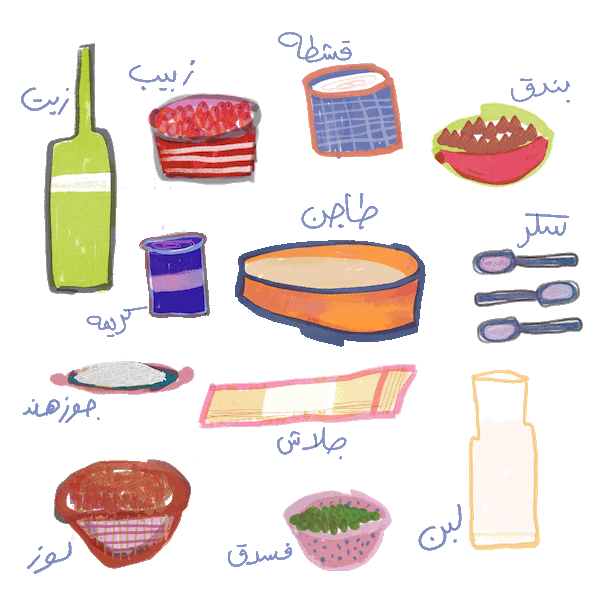
![]()
Two of the activities that made the biggest impression on me were the collaborative real-time translation of Le Guin’s “The Carrier Bag Theory of Fiction” and our group discussion “Broadcasts and Backchannels” about what can and can’t be said about women’s empowerment in Egypt. These exercises were extremely different in form and content; yet both revealed to me the formidable collective intelligence that was arising out of this group, and that these exercises were helping to hone. Both exercises highlighted for me the necessity of addressing the social issues at the heart of our lab as fundamentally multifaceted, and underscored the significance of a polyvocal approach to speaking to these issues as such in order to do justice to the complex intersectional realities of Egyptian cultural experience. For every argument raised, there is another side to consider. And for every strong statement voiced righteously, there is another—perhaps softer—voice simultaneously yearning to be heard.![]()

After opening our time capsules at the end of our fourth workshop day, groups started to form around project ideas. On our fifth workshop day, each project was proposed before two guest critics, Elham Khattab of Out of the Circle, and Maya Hilbert of New Media Artspace at Baruch College. With feedback from Elham and Maya, the participants then launched into an intensive 12-day development period during which they created new media art works-in-progress while I curated the proposed works in a virtual exhibition. Drawing on the notion of multi-sidedness, and inspired by our “Back-to-back media” day, I titled the exhibition “Recto & Verso,” referencing a term from book design that refers to the front and back sides of a page.
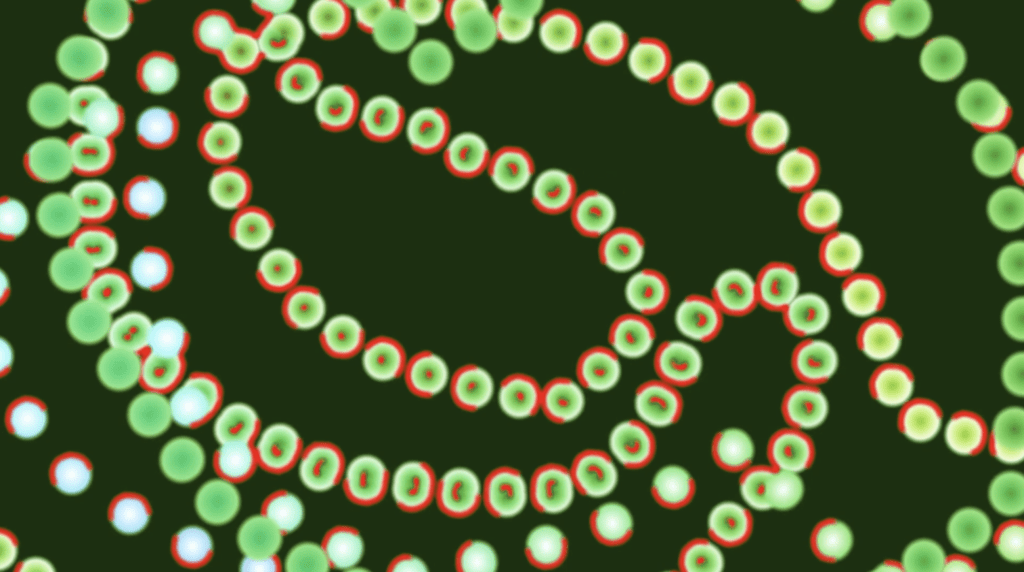
The works-in-progress that emerged speak powerfully to this notion. I’ve been floored by the eloquence and intensity of the work that was created during this short time. I invite everyone to visit the virtual exhibition at cil.medrar.org. Like me, I’m sure you will be excited to think about how the projects that were fomented during the lab will soon be taking new shapes and moving forth—from the lab into the world.

As I think about leaving the lab behind and moving forth toward the next stages of our journey, I am immensely grateful for the time I’ve spent with this generous group of talented artists. I’m grateful for their hospitality in welcoming me into the fold, for being so forthright and patient in sharing with me in the spirit of cultural exchange, and for trusting me throughout this process. In my view, one of the greatest successes of the lab is that many participants have indicated to me that they felt supported in this process. Thinking toward the future, I hope the lab will live on in these discoveries of forms of mutual support, ongoing artistic collaborations, and lasting community.
Feature image credit: Al-Dad by Sara El-Barkouky, Esraa Elfeky, Youssef Abdelmaged, Amany Adel, Ramah Aleryan, Ahmad Aiuby (2021). Image courtesy of the artists.
For over two decades, my interventions in contemporary technoculture have involved opening “black boxes” that proliferate in and around computer culture and challenging cultural assumptions about who participates with emerging technologies. The intersections of gender, race, class, and labor in digital culture (and their contradictions!) are the main subject matter of my work. Likewise, the perspective I bring when I use or critique technoculture and its objects is informed by my own intersectional position as a woman, a multiracial person of color, an artist, a writer, a curator, an educator, and—as this cultural exchange highlights—an American. I am always looking for ways to unpack the realities and identities we take for granted, and to invent and explore alternatives. I approach this process through feminist practices like camaraderie, care, solidarity, sharing, attentive listening, and proactive allyship.
In this spirit, Creative Impact Lab Cairo will foster conversations and dialogue. I am looking forward to learning about women’s empowerment in an Egyptian context. My learning has already begun. With the insightful and indefatigable Rodeina Fouad, I have just completed the humbling experience of reviewing applications and portfolios from 105 applicants. Grueling as this process was, I’m grateful for the exposure to so many diverse viewpoints and some truly amazing work by Egyptian artists!
During the first part of the exchange, I will share ways I work across art and theory. In particular, we’ll be putting theory into practice: By approaching technologies as objects, we’ll apply theories my collaborators and I developed in Object-Oriented Feminism (University of Minnesota Press, 2016). At the same time, we’ll be putting practice into theory: I’ll offer my own practice—specifically, my recent solo exhibition Backups (Mazmanian Gallery, 2019)—as a starting place to reverse-engineer principles of women’s empowerment via digital art. Drawing on Backups, we’ll use touchstones like backing up (as time travel or as forking in tech R&D), backups (as digital archives or feminist comrades), backpacks (as crucibles for women’s narratives and counter histories à la Ursula K. Le Guin’s “The Carrier Bag Theory of Fiction,” 1986), and backchannels (as secure communication protocols for fostering women’s empowerment and sharing women’s stories). Participants will be invited to explore and develop these in their own projects during the second part of the exchange.
While spinning off Backups and various formations of “backs,” I couldn’t help but think of the canonical American feminist anthology, This Bridge Called My Back: Writings by Radical Women of Color, now in its fourth printing (edited by Cherríe Moraga and Gloria Anzaldúa, SUNY Press, 2015). Having managed to locate a copy at a local bookstore, I collected a bag bearing my name in pink magic marker from curbside pick-up and opened it still in the car. The first word on the first page of “Catching Fire,” Cherríe Moraga’s preface to the Fourth Edition, made me catch my breath: “Egypt.” Recalling the excitement that she felt watching news reports about the actions at Tahrir Square, Moraga situates feminist revolution as a shared experience of solidarity in-common. She writes, “To view the world today through a feminist of color lens shatters all barriers of state-imposed nationality,” (Moraga, xvi). I take this as a fortuitous omen and am full of anticipation for the work we will do together in the coming weeks.
Image credit: Curbside pick-up of This Bridge Called My Back (left) and a positive omen in the preface to the Fourth Edition (right). Photos by Katherine Behar.
Open house for “Lima 2100: Collective Resilience through Adaptive Urbanism” in the virtual Museo de Arte Contemporáneo (MAC Lima) gallery, created and curated by Gabriel Kaprielian exhibiting work of American Arts Incubator — Peru artists (2020).
It’s been a little over a month since the American Arts Incubator — Peru (AAI Peru) program was completed. Reflecting back on the month-long exchange, the global pandemic and virtual format did not dampen the enthusiasm and brilliance of the participating artists. Instead, it challenged us to adapt and respond to the moment, framed by the past, while projecting onto the future. Meaningful connections were made, ideas and knowledge were shared, and amazing new artwork was created. By all accounts, the program was a huge success! Thanks to the dedication of many wonderful people that made this possible.
I led four workshops that introduced technology platforms, theoretical frameworks, encouraged discussion, and led to short exercises applying these tools with artists' ideas. Workshop 1 involved a collective “Psycho-geographic Mapping” of Lima using a virtual whiteboard canvas. In Workshop 2, artists created “Postcards from the Future” that showcased speculative visions of Lima in the year 2100. Workshop 3 introduced tools for digital 3D modeling to create a collaborative “Monument to the Pandemic.” Workshop 4 demonstrated the use of augmented and virtual reality to visualize the artists' work.
There were two guest speaker panels that introduced further discussion on the social challenge of urban development in Lima, focusing on the themes of climate change, social equity, and urban health. The first panel was centered around public space and included Dr. Patricia Kim (Monument Lab), Dr. Ghigo DiTommaso (Gehl Architects), and Lucía Nogales (Ocupa tu Calle). The second panel focused on socially-responsive artwork and included Nicolas Gomez Echeverri (MAC Lima), Natalija Boljsakov (UTEC), Ferran Gisbert (UTEC), and Kiko Mayorga (UTEC).
For the last ten days of the program, each artist created new artwork responding to the theme, “Lima 2100 – Collective Resilience through Adaptive Urbanism.” These works took the form of 2D collage, audio and video, and digital 3D forms. I was amazed by the creativity and thoughtfulness of each project and the passion each artist demonstrated in developing their work in such a short amount of time.
Artists presented their artworks and concepts to a guest panel where they received outside feedback. The final exhibition was originally planned to take place in the Museo de Arte Contemporáneo (MAC Lima). Instead, we created a virtual reality gallery in Mozilla Hubs of MAC Lima with a curated exhibition of each artist’s work. This was the first time we were able to gather in the same "room," walking around and chatting, viewing the artwork as a collective project.
I want to give a big thank you to all of the participating artists, our partners in Lima including UTEC, MAC Lima, and the U.S. Embassy, as well as our guest speakers and panelists. This program has introduced new ideas and understanding in my creative practice and expanded my ecosystem of collaborators. I am grateful for the opportunity to have taken part in AAI Peru.
Since the tragic killing of George Floyd on May 25, our staff have been in deep listening mode — thinking and discussing internally how to most effectively act in solidarity with the Movement for Black Lives in the pursuit of racial justice.
We continue to mourn the incessant violence enacted by police on the unarmed bodies of black citizens such as Breonna Taylor, Tony McDade, Rayshard Brooks and so many more. As our collective resistance grows, we are witness to the tactics of intimidation, escalation, and excessive force used by agents of the state against protesters. The broader systemic failure of these publicly funded agencies, allegedly tasked to serve and protect, is being laid bare.
We affirm that there will be no justice in this country until we acknowledge that all black lives matter and we begin to reshape our institutions in support of that belief. The scope of policing must be reduced, while the reach of social services, health care, education, and cultural activities must grow. The coming reinvestment in communities will require a critical anti-racist approach, if we are to move together towards justice.
As a nonprofit organization at the intersection of art, science, and technology, we acknowledge that the nonprofit industrial complex, the arts sector, the production of scientific knowledge, and the development of technological innovation are all embedded within oppressive systems that have perpetuated white supremacy. As an historically white-led institution, we carry a legacy of privilege that must be examined, unpacked, and reorganized in order to move forward in service of equity and justice. Working with media artists who are experimenting with emerging technologies and new tools, our work is fraught with technological fetishism and obsession with novelty. With our gaze oriented towards the future, we can either blindly pursue creative innovation in service of inequitable resource accumulation, or we can choose to apply our creativity to reimagine a more just, inclusive world. Our call to action is clear.
We have begun a strategic planning process that will provide a framework for change in our organization, taking into account contemporary conditions: the growing momentum of the movement for racial equity in our home communities and the localization of activity due to the pandemic. As we embark on this work, we commit to the following actions:
Internal Actions
External Actions
As members of our community, we rely on your perspective and collective wisdom to guide us in our work. We invite your comments and reflections on the work we have done and the proposed actions above. Please be in touch and share your thoughts so that we may refine our efforts.
In solidarity,
Team ZERO1
All AAI Brazil projects can be experienced at www.aaibrazil.com
The entirety of this experience, from beginning to end, is something I will cherish and continue to be inspired by as I go forward in my art practice. From the relationships forged on the ground to my amazement of the vision and voices of the participants, and for our entire team’s resilience and creative pivoting in response to the pandemic, I am forever grateful.
When I arrived in Belo Horizonte, there was a charge in the air. It was something that was hard to pin down in the moment; it felt like a fire inside. After talking with people, learning their stories and their struggles, as well as their similarities to people I knew back home, the urgency to amplify the humanity in our shared experience burnt in me like a beacon. Whatever was to be created in this short time we had together had to transcend convention, and inject a much-needed narrative into the often cold landscape of art and technology — breathing life into it.
There were a lot of meaningful exchanges and experiences along this journey, but the ones that really stood out to me were the events that inspired us to create portals for healing — and to witness the participants embrace and overcome the challenges of creating team-based virtual experiences while in physical isolation.
Upon my arrival in Belo Horizonte, Francisca of our host partner JA.CA, took me to the opening of a new exhibition entitled "VAIVÉM," which showcased the work of Indigenous Brazilian artists and the narrative of the hammock.
There, I met an Indigenous artist and healer named, Iba, who sang traditional healing songs and linked those songs to the murals he had painted on the walls. I talked with him in my native language and he talked in his; we were laughing at the similarities in our creation stories and symbologies, and he told me his work was entirely about building gateways for healing, or portals. We laughed again, because that is exactly what my practice was/is and what I wanted to create during the incubator.
Needless to say, the participants took every tool and every opportunity that was presented to them to tell their stories, and they delivered. Watching their rapid progression from learning 3D scanning, projection mapping, augmented reality, and finally virtual reality, was simply incredible.
The teams' abilities to seamlessly incorporate these tools into a very human experience on a completely unfamiliar platform was beyond anything I could have expected. When it was all said and done, we augmented a new, uncharted digital landscape with reality and humanity. Life was breathed into each project — life that will outlive our own.